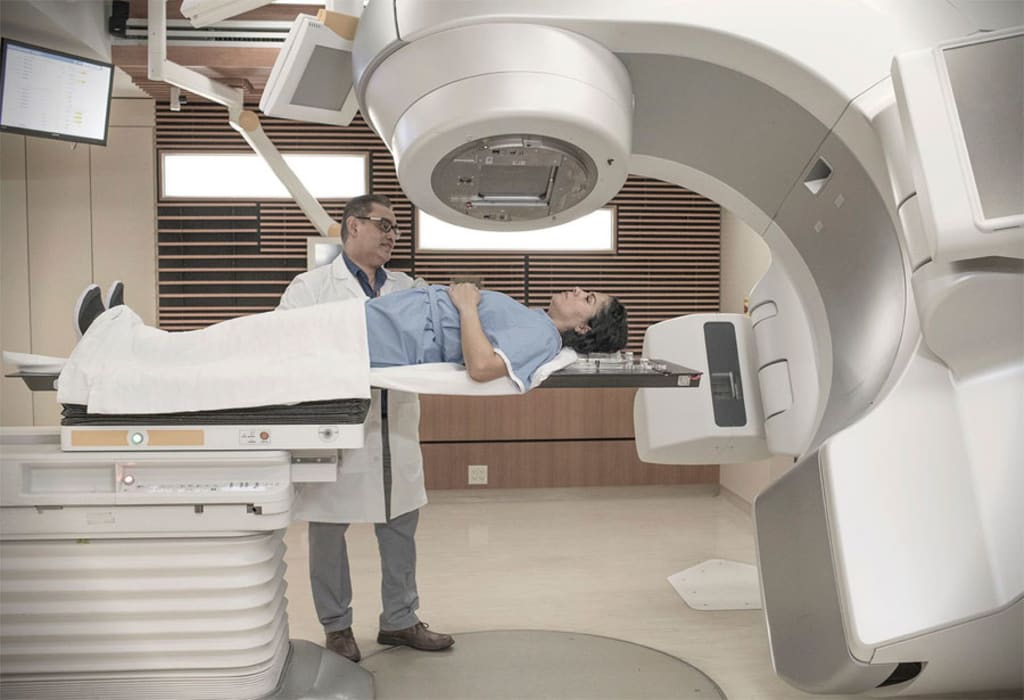The Basics of Radiation Therapy for Cancer Treatment
What to Expect When Having Radiation Therapy?

When electromagnetic rays that are considered high energy rays on the electromagnetic spectrum are used to destroy and shrink the cancerous tumours and cells then this process is called radiotherapy. Many people who are diagnosed with cancer and are required to undergo radiotherapy, are already wary about this procedure because of the word ‘radiation’.
According to stats and figures, more than 130,000 people are estimated to be diagnosed with cancer in 2017. Therefore, spreading awareness regarding cancer-related treatment can help in reducing those numbers. Getting a better understanding of radiation therapy might help people to lose the fear of this treatment.
Why Radiation Therapy is effective for killing cancerous tumours?
Unlike normal cell division, the cells in cancerous tumor grow and divide at exponential levels. This abnormal fast growth of cancer cells is caused by the DNA inside those cells. High energy electromagnetic rays in radiation therapy attack on the double helix of the DNA to denature them. The ineffectiveness of the DNA decelerates the growth of cancer cells and eventually leads to the death of the cells.
How Radiation Therapy Works Against Cancer
At high doses, radiation therapy kills cancer cells or slows their growth by damaging their DNA. Cancer cells whose DNA is damaged beyond repair stop dividing or die. When the damaged cells die, they are broken down and removed by the body.
Radiation therapy does not kill cancer cells right away. It takes days or weeks of treatment before DNA is damaged enough for cancer cells to die. Then, cancer cells keep dying for weeks or months after radiation therapy ends.
Instances in which a patient is referred for Radiotherapy
To Shrink Tumour before Surgical Oncology
In cases where patients are diagnosed with a big size tumour, oncologists prefer to treat the patient with radiotherapy first in order to shrink the size of the tumour. Shrinking the tumour helps them in getting the best result from surgical oncology.
To Stop the Spread & Recurrence of Cancer
Sometimes few cancer cells spread to other parts of the body where they can’t be detected through imaging scans. To kill those cells, radiotherapy is used in areas which are more prone to the spread of cancer cells. Additionally, radiotherapy can also be used at the site where a tumour has already been treated, in order to make sure that the disease won’t come back.
To Alleviate the Effects of Advanced Cancer
Advanced cancer is that stage of the disease where it becomes too difficult to cure. To ease the patient’s pain and making the severity of other symptoms less, radiotherapy can be used to reduce the size of the tumours which can help patients, who face difficulties, in bowel movements.
Different Radiotherapy Techniques
The uses of radiotherapy can be implemented with these three different techniques.
External beam Radiation
It uses a focused beam of high energy rays from outside the body to target the cancer tumour. The tumours that spread on larger areas are treated with external beam radiation. Patients have to go to hospitals and treatment centres in order to get this radiation treatment.
Internal Radiation Therapy
In this type of radiation therapy which is also called brachytherapy, a radiation source is placed inside the body, near the tumour. This technique is used to treat sensitive areas, within the body, such as prostate and eyes, to limit the exposure of normal tissues to the radiation.
Systemic Radiation Therapy
In some types of cancers, radioactive drugs are given orally to travel across the body, through the veins. This procedure is called systemic radiation therapy.
The information above can help people in understanding how radiotherapy can be used for the treatment of cancer patients.
About the Creator
Enjoyed the story? Support the Creator.
Subscribe for free to receive all their stories in your feed. You could also pledge your support or give them a one-off tip, letting them know you appreciate their work.






Comments
There are no comments for this story
Be the first to respond and start the conversation.